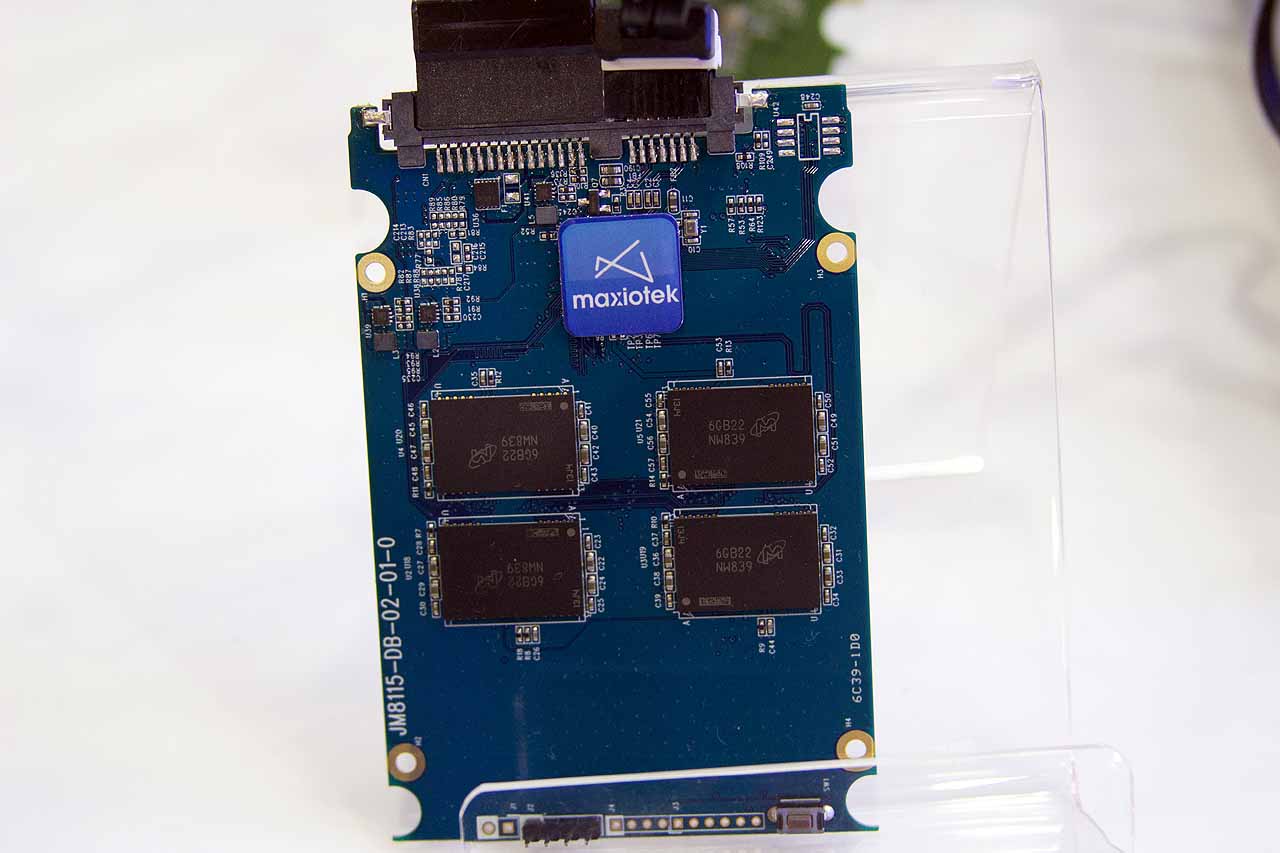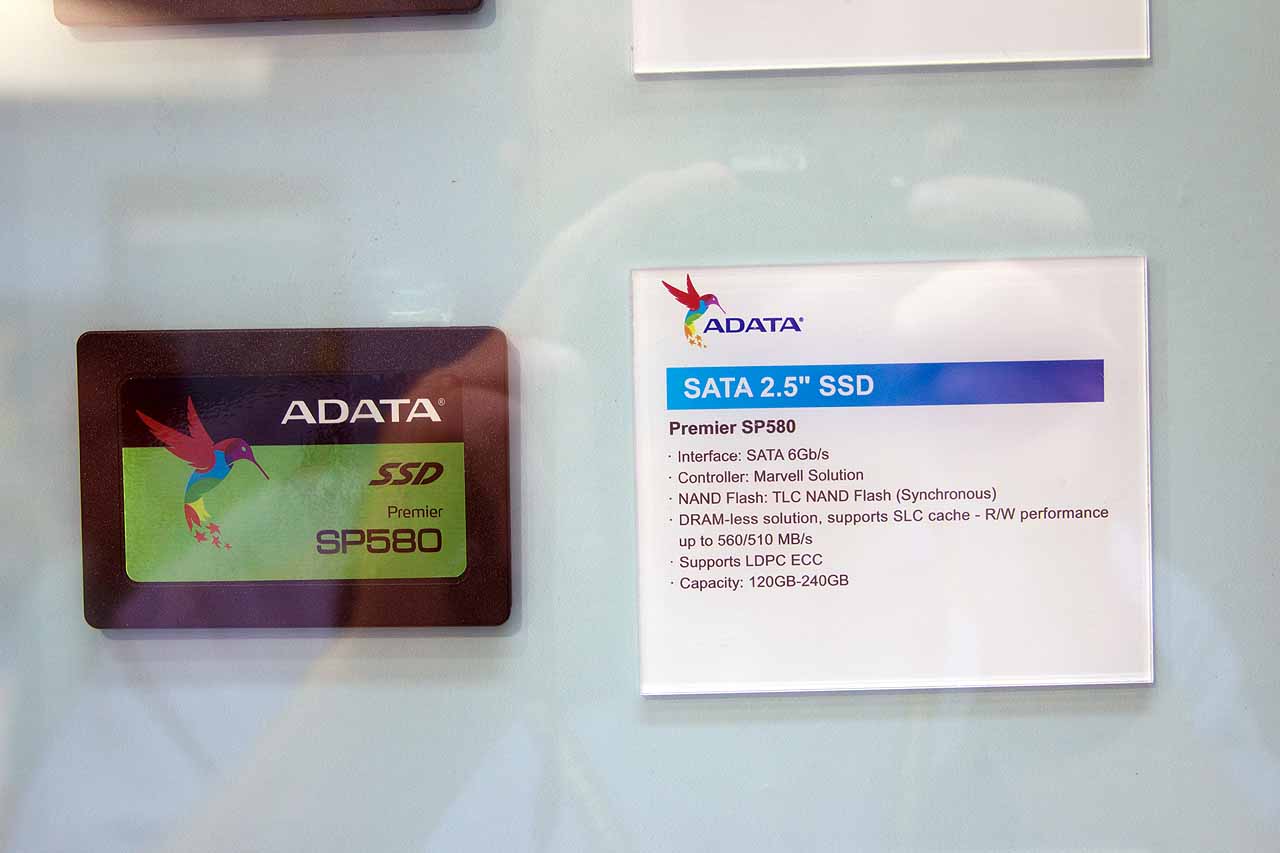Adata Enters DRAMless Space With 2D, 3D TLC NAND SSDs As "HDD Replacements" Come To Fore
An industry-wide transition to TLC-powered SSDs is inevitable due to the lower price structure and increased density offered by the less-endurant form of NAND. TLC (Triple Level Cell) NAND stores three bits of data per cell, in comparison to MLC (Multi-Level Cell), which stores only two bits. The addition of an extra bit of data increases density by storing more data in the same space, but it also wears the NAND faster, thus reducing endurance. This means that TLC falls into the value bin while MLC is the high-end offering.
3D NAND changes the TLC game a bit, as it offers much more endurance than standard 2D (planar) NAND along with higher performance and even more storage density. 3D NAND is the almost perfect medium for TLC NAND; its endurance rivals 2D MLC NAND, but unfortunately, it commands a higher cost than its 2D TLC NAND counterpart.
Several SSD vendors are engaged in the race to the pricing bottom, and DRAMless TLC SSDs are the preferred vehicle at this point. Removing the DRAM buffer slows performance substantially (DRAM speeds access to the LBA tables that serve as a "map" of the SSD), but it also peels back yet another layer of pricing. The SSD vendors position this new category of low-performance TLC SSDs as "HDD replacements," and due to the constant push to reduce cost, we will become well accustomed to this new ultra-low cost and low-performance segment as the year progresses.
Adata had both 2D and 3D TLC DRAMless SSDs on display at Computex 2016.
Adata SU700 DRAMless 3D TLC and MLC SSDs
As mentioned, the HDD-replacement DRAMless TLC SSD market is going to fragment into 2D and 3D options, with the 2D option being the cheapest solution.
The Adata SU700 is a DRAMless SSD that comes in both 3D TLC and MLC NAND flavors. The test results at the top of the monitor are with the 3D TLC NAND, and the test results on the bottom are with 3D MLC NAND. Although the very limited test suggests that the performance of both solutions is similar due to the lack of DRAM, the 3D MLC solution will provide higher endurance than the TLC version. Adata did not share endurance data, so we cannot quantify the endurance differentiation, and extended steady-state testing will likely illustrate more performance differentiation between the two solutions.
The full-size PCB on display sported the forthcoming Micron 3D NAND and the SATA 6 Gbps Maxiotek MK8115 controller. Maxiotek is a new name to the SSD controller market, but it is built upon the foundation of the old JMicron business. The change to Maxiotek is more than just a rebranding effort; a chat with Maxiotek representatives revealed that the company split away from JMicron to focus on SSD controllers specifically, which it hopes will breathe new life and capabilities into its range of controllers.
Get Tom's Hardware's best news and in-depth reviews, straight to your inbox.
The Maxiotek controllers support up to 1 TB of capacity and also employ an internal RAID scheme as an additional layer of data protection. The SSDs come in both the standard 2.5" form factor and support half-size PCBs, as pictured above. The diminutive PCB also has four NAND packages on the rear, and the open DRAM mounting pad to the left of the controller indicates that the MK8115 controller also supports DRAM.
Adata SP580 DRAMless 2D NAND SSD
Adata also had the DRAMless SATA 6 Gbps SP580 SSD on display in its booth, though the company did not officially launch it until a few days after Computex.
The SP580 features standard 2D TLC NAND and will slot into the extreme low end of the market. The Marvell-powered SSD supports dynamic SLC (Single Level Cell) caching, which means a flexible amount of the TLC NAND operates as an SLC layer. The SLC layer has much higher endurance and speed than TLC NAND, and vendors use it to cache incoming data before it is flushed to the less-endurant layer, thus boosting overall endurance metrics. The controller also employs LDPC (Low Density Parity Check) error correction algorithms to increase endurance.
Adata did not provide the SP580's endurance rating or indicate a warranty period. The SP580 features 560/410 MBps of sequential read/write throughput, but the company did not indicate the random performance measurements. The SP580 supports DEVSLP (device sleep) functionality, which reduces power consumption drastically during idle/light use.
The SP580 comes in 120 GB and 240 GB capacities only, and includes the Adata SSD toolbox software, which eases data migration and allows users to monitor drive life and status. The SP580 will be available at both Newegg and Amazon.
Paul Alcorn is a Contributing Editor for Tom's Hardware, covering Storage. Follow him onTwitter and Google+.
Follow us @tomshardware, on Facebook and on Google+.

Paul Alcorn is the Editor-in-Chief for Tom's Hardware US. He also writes news and reviews on CPUs, storage, and enterprise hardware.
-
Nintendork I prefer just to spend that tiny bit more and go the 850EVO or Sandisk Extreme 500GB.Reply -
mapesdhs Somehow it feels atm that SSD tech is moving backwards a bit. Rather than move to higher capacities at the same price points (or allow a natural price lowering to occur over time as tech evolves), the industry is trying to sell products that are worse than previous designs just to get sales at lower price levels and drive volume. Not impressed. Stick to better designs and better reliability, it's worth the extra cost.Reply -
Carskick I've used the cheap TLC drives from ADATA and Mushkin to refurbish old machine and as secondary storage for games. For those types of usages, I think they're perfect! But as a primary drive in a new build, I agree, get something better!Reply



